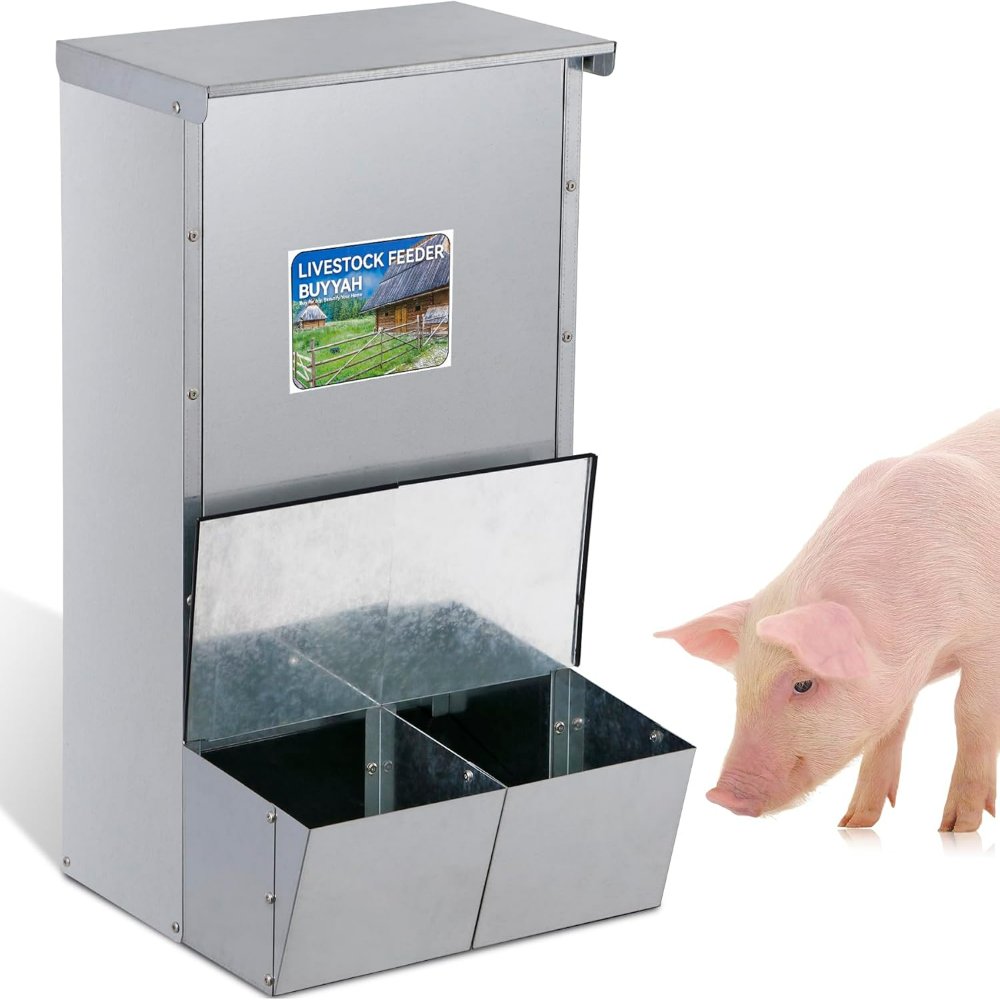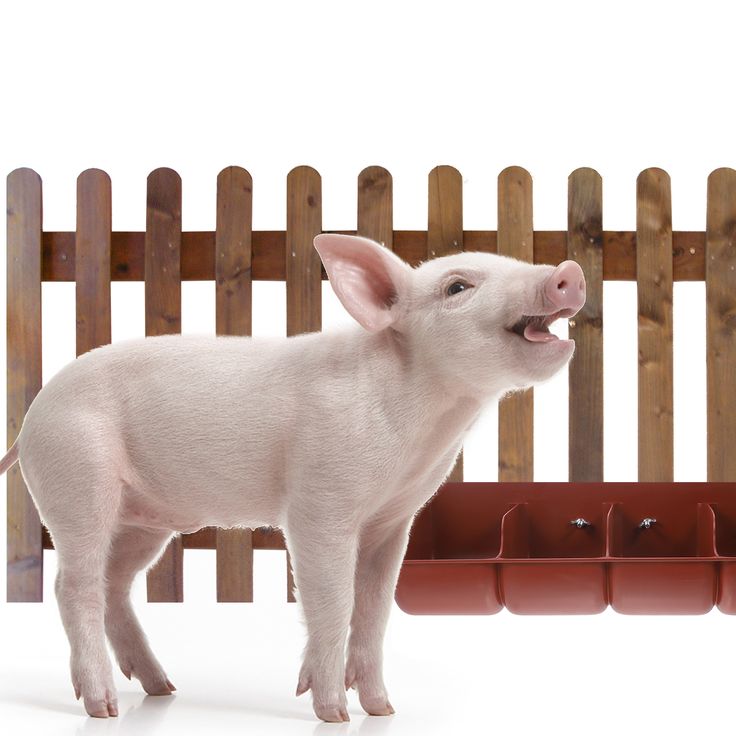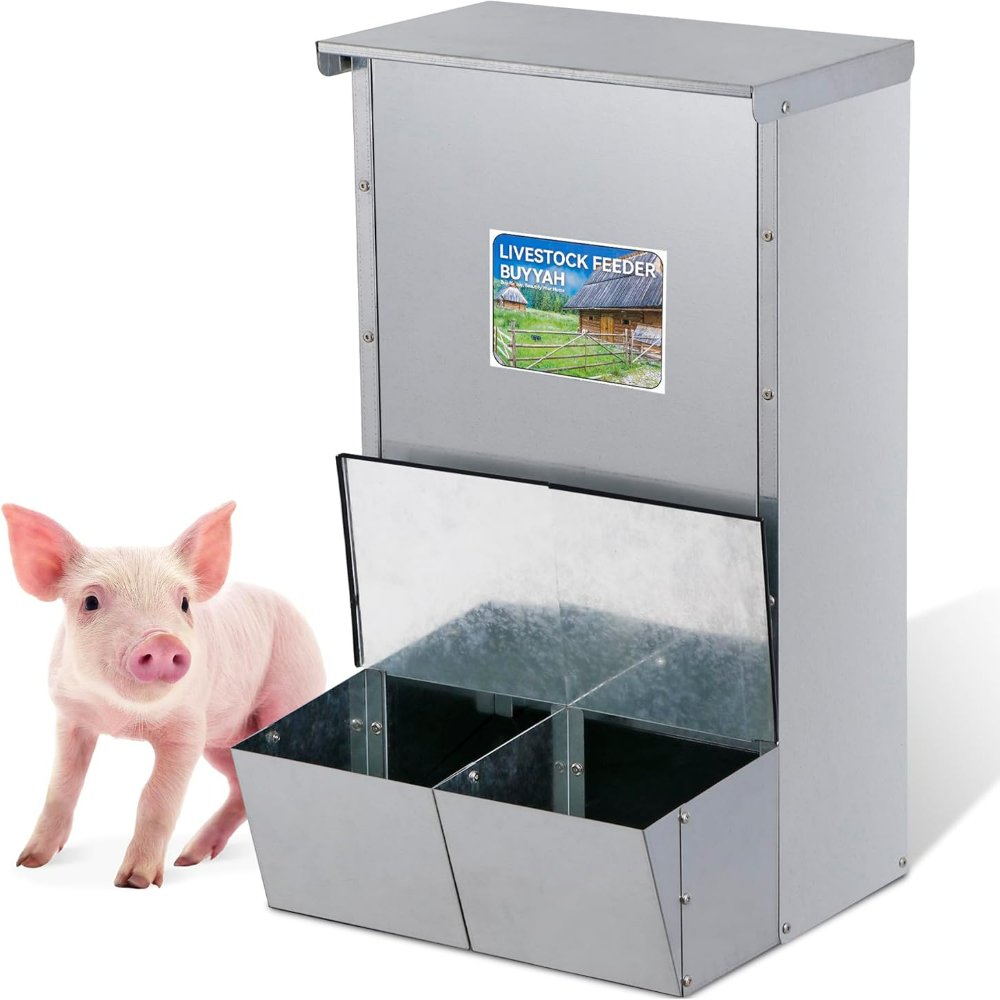Introduction to Feeder Pigs
Feeder pigs are great for homestead farming. They are young pigs, only around 8 weeks old, bought for the purpose of raising and later slaughter. In four to six months, these pigs grow sufficiently for processing. Raising feeder pigs can help you fill your freezer with pork. This supports your family’s meat needs for a year before raising another batch.
Starting with feeder pigs means less commitment than breeding pigs year-round. You can skip the breeding cycle and focus on growth and care. They require housing, feed, and some space to grow. It’s a cost-effective method since you buy young and raise them yourself. This ensures you know what goes into your pork, making it a healthier choice.
Feeder pigs are also a good starting point for beginners. They allow you to learn about pig raising without long-term obligations. After the initial setup of shelter and fencing, the focus shifts to feeding and care. It’s perfect for those new to homesteading or farming who want to expand their livestock operations.

Selecting the Right Feeder Pigs
Selecting the right feeder pigs is crucial for successful homesteading. Here are some key factors to consider when choosing your pigs:
- Age and Size: Typically, feeder pigs are sold at about 8 weeks old. Ensure they are healthy and active, reflecting good potential for growth.
- Breed: No specific breed is necessary for meat production. However, consider common breeds like Yorkshire or Duroc for their growth rates and meat quality.
- Health: Check for clear eyes, good mobility, and no signs of illness. Healthy pigs are more likely to grow well and require less veterinary care.
- Cost: Prices can vary based on location and breed. Generally, feeder pigs cost between $25 and $100 each. Plan your budget accordingly.
- Source: Purchase pigs from reputable sources. This ensures that the animals were raised in decent conditions and reduces the risk of diseases.
By considering these factors, you can select feeder pigs that will thrive on your homestead and provide a reliable source of pork.
Housing and Shelter Needs for Your Pigs
Providing suitable housing for your feeder pigs is essential. They need protection from weather and a cozy place to rest. Here are the primary shelter requirements:
- Simple Structures: A pigpen or a small barn works well. Use sturdy materials.
- Ample Space: Ensure there is enough room for pigs to move, eat, and sleep comfortably.
- Ventilation: Good air flow keeps the shelter fresh and pigs healthy.
- Dry Bedding: Straw or wood shavings absorb moisture and maintain warmth.
- Protection: Shelter must be secure from predators and extreme temperatures.
Remember, a well-planned shelter improves pigs’ growth and wellness. Keep it clean and dry to prevent diseases. Effective housing contributes to the success of raising feeder pigs.
Feeding Your Feeder Pigs: Diet and Nutrition
Good diet and nutrition are key to raising healthy feeder pigs. Here’s what they need:
- Balanced Diet: Combine commercial pig feed with fresh scraps for a well-rounded meal.
- Protein: Young pigs need high-protein feed to support growth. Aim for feed that’s 17-18% protein.
- Fresh Scraps: Supplement their diet with kitchen leftovers, vegetables, and fruit. Avoid processed foods.
- Clean Water: Pigs must have access to fresh water at all times. Change it daily.
- Moderation: Overfeeding can lead to waste and health issues. Follow feed guidelines based on pig weight.
- Feed Storage: Keep feed in secure, dry places to prevent spoilage and pests.
Remember, a well-fed pig grows fast and stays healthy. Keep meals varied and adjust as they grow.

Fencing and Containment Strategies
Ensuring your feeder pigs remain safely within their designated area is crucial. Here are some fencing and containment strategies to consider:
- Strong Fencing: Pigs are known for their strength and determination. Use robust fencing materials like hog panels or sturdy wire mesh to keep them contained.
- Electric Fence: Some farmers prefer electric fences for pigs. It’s cost-effective and a strong deterrent if installed at the right height.
- Fence Height: Pigs are not great jumpers, but a good rule is to have fencing at least 3 feet high to prevent escapes.
- Burrowing Prevention: Bury the bottom of your fences deep into the ground. This stops pigs from rooting underneath to escape.
- Regular Inspection: Frequently check fences for damage or weak spots. Pigs will quickly exploit any gaps in their enclosure.
- Secure Gate: The entrance to the pig area must have a secure gate. Pigs pushing against a weak gate can easily break free.
- Space for Growth: As pigs grow, their containment needs may change. Make sure your fencing strategy is scalable.
Adequate fencing and containment not only keep your feeder pigs safe but also prevent them from causing destruction in unwanted areas of your homestead. Implement these strategies to maintain a well-managed pig pen.
Health and Veterinary Care for Feeder Pigs
Maintaining the health of feeder pigs is vital for a thriving homestead herd. Regular veterinary care, vaccinations, and deworming are crucial aspects of pig health management. Here’s how you can ensure your feeder pigs stay in tip-top shape:
- Regular Check-Ups: Schedule visits from a livestock vet to monitor pig health.
- Vaccinations: Protect pigs from common diseases with a proper vaccination program.
- Deworming: Use recommended dewormers to prevent parasitic infections.
- Daily Observations: Watch for changes in behavior or appetite as they can signal health issues.
- Clean Environment: Keep living spaces clean to reduce disease risk.
- Isolate Ill Pigs: Separate sick pigs from the herd to avoid spreading illness.
- Proper Nutrition: Ensure a balanced diet to support immune health.
By following these practices, you help prevent diseases and promote the welfare of your feeder pigs. Healthy pigs are more productive and cost-effective in the long run.

The Economics of Raising Feeder Pigs
When considering the economics of raising feeder pigs, there are various factors to weigh.
- Initial Investments: Prepare for upfront costs such as shelter, fencing, and feeding equipment. These expenses are a one-time outlay but set the stage for your herd’s future.
- Ongoing Costs: Day-to-day expenses include feed, water, and veterinary care. Keep a close eye on these to manage costs well.
- Feed Expenses: Feed is the biggest recurring cost. Opt for bulk buying or growing supplemental feed to save money.
- Potential Income: Once mature, pigs can be sold for meat. This is the primary way to recoup your investments.
- Butchering Costs: Decide whether to use a professional service or process the meat yourself. Doing it yourself can significantly reduce expenses.
- Waste Management: Properly handling manure and leftovers is vital. They can be composted adding value to your gardens.
- Market Research: Understand local meat prices to forecast potential earnings. Staying informed helps in pricing your pork right.
By carefully budgeting and planning, you can make raising feeder pigs an economically sound part of your homestead.
Preparing for Slaughter: Butchering and Processing
When it’s time to slaughter your feeder pigs, you have two main options. You can either hire a professional butcher, or you can learn to do it yourself. Doing it yourself can be more cost-effective and gives you full control over the process.
Hiring a Professional Butcher
If you choose to hire a professional, consider the following:
- Cost: Professional butchering can be costly. Compare prices to find the best deal.
- Experience: Choose a butcher with experience in pigs for the best results.
- Facility: Ensure the facility meets all health and safety standards.
Butchering the Pigs Yourself
If you decide to butcher the pigs yourself, here’s what you need:
- Tools: You’ll need a sharp knife, a saw, and other butchering tools.
- Skills: Learn the necessary skills from experienced butchers or online tutorials.
- Space: Make sure you have a clean, spacious area to work in.
- Storage: Prepare adequate space to store the meat, ensuring it stays fresh.
Regardless of the method you choose, always follow safety guidelines. This ensures the process is humane and the meat quality is high. By handling butchering and processing yourself, you could save up to 50% of the costs.


